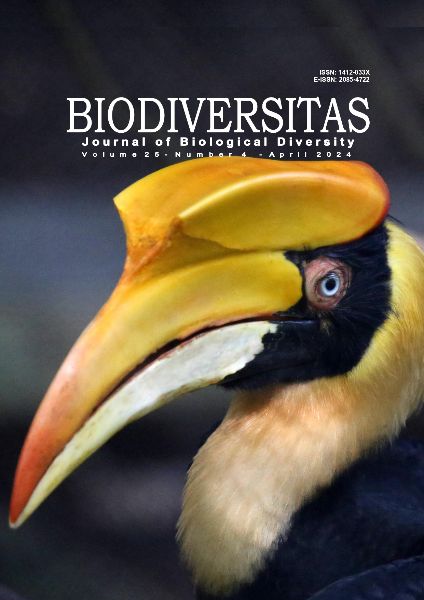Short Communication: Genetic diversity and identification of unique Omicron variant markers of SARS-CoV-2 in Indonesia
##plugins.themes.bootstrap3.article.main##
Abstract
Abstract. Suardana IBK, Mahardika BK, Santosa AAANA, Mahardika GN. 2024. Short Communication: Genetic diversity and identification of unique Omicron variant markers of SARS-CoV-2 in Indonesia. Biodiversitas 25: 1781-1787. The rapid and global spread of Severe Acute Respiratory Syndrome Coronavirus 2 (SARS-CoV-2) has caused enormous socioeconomic disruptions, such as local and global travel, country or city lockdown, and manymore. We tested the hypothesis that global introduction and local substitution markers that are unique to Indonesia due to the global travel restrictions could be identified. All complete and high-coverage genomes of all Omicron variant sequences submitted from Indonesia were downloaded from the Global Initiative on Sharing All Influenza Data (GISAID), in October 27, 2022, and aligned with the Wuhan-Hu-1 strain and randomly selected Nextstrain Omicron clades. Genetic diversity was calculated using Tajima’s neutrality test, and phylogeny was constructed using the neighbour-joining method in Mega 11. The overall whole genome diversity of the Omicron variant detected in Indonesia is 0.0008, with the three highest coding region diversities being Open Reading Frame 6 (ORF6), Envelope, and Spike protein. The Tajima D value of the whole genome is -2.669, while the three highest Tajima values are ORF6, Envelope and ORF10. The phylogeny shows that there are 168 sequences of Indonesian Omicron variants, which do not share branches with Nextstrain Omicron clades. Unique amino acid substitutions to Wuhan-Hu-1 of the Omicron variants detected in Indonesia occurred in some coding regions, mainly in ORF1AB and Spike. We encourage country-based analysis as a lesson for future pandemic events.

